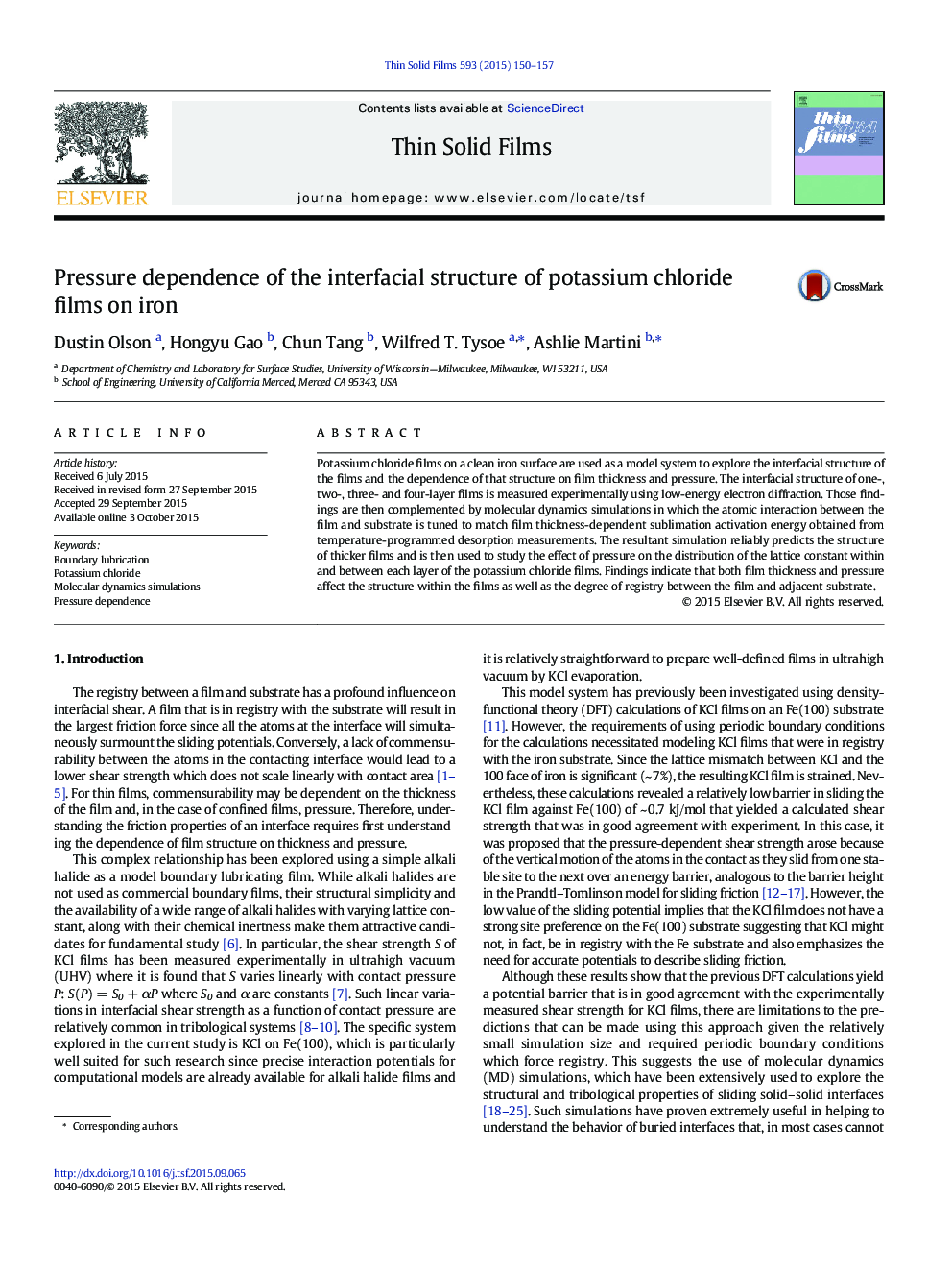| Article ID | Journal | Published Year | Pages | File Type |
|---|---|---|---|---|
| 1664335 | Thin Solid Films | 2015 | 8 Pages |
•KCl films on an Fe surface are used as a model system to explore interfacial structure•Thin film structure is measured using low-energy electron diffraction•An empirical potential is tuned to match sublimation activation energy•Simulations reveal the effect of pressure on the lattice constant within the KCl films•Pressure affects the film structure and registry between film and substrate
Potassium chloride films on a clean iron surface are used as a model system to explore the interfacial structure of the films and the dependence of that structure on film thickness and pressure. The interfacial structure of one-, two-, three- and four-layer films is measured experimentally using low-energy electron diffraction. Those findings are then complemented by molecular dynamics simulations in which the atomic interaction between the film and substrate is tuned to match film thickness-dependent sublimation activation energy obtained from temperature-programmed desorption measurements. The resultant simulation reliably predicts the structure of thicker films and is then used to study the effect of pressure on the distribution of the lattice constant within and between each layer of the potassium chloride films. Findings indicate that both film thickness and pressure affect the structure within the films as well as the degree of registry between the film and adjacent substrate.
